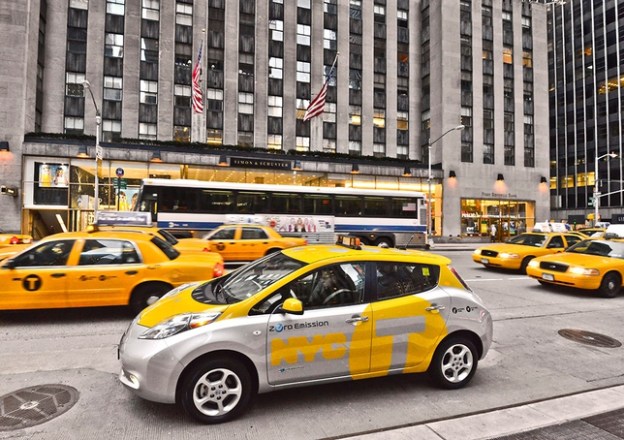 Nissan and New York City Mayor Michael Bloomberg teamed up for the launch of a new electric vehicle taxi pilot program in the city with the Nissan Leaf that likely is a sign of things to come.
Nissan and New York City Mayor Michael Bloomberg teamed up for the launch of a new electric vehicle taxi pilot program in the city with the Nissan Leaf that likely is a sign of things to come.
The program, which will place six Leafs into New York’s taxi service this spring, aims to help Nissan, the city and the public understand how zero emission vehicles can be integrated into future taxi fleets.
The announcement of the pilot program follows last year’s debut of the 2014 Nissan NV200 Taxi after Nissan won a two-year competitive bidding process to become the exclusive taxi of New York City beginning later this year.
“As part of our commitment to zero emission vehicles for the mass-market, Nissan is looking for ways to broaden the use of electric cars, including commercial applications like taxis,” said Joe Castelli, vice president of Nissan Commercial Vehicles. “Following the selection of Nissan NV200 as New York City’s Taxi of Tomorrow, our relationship with the city provides us the ultimate proving ground to conduct this LEAF taxi pilot to help optimize the use of electric vehicle technology for future applications.”
May Michael Bloomberg added that while New York’s Taxi of Tomorrow program won’t be implemented for another six months, the Leaf program looks ahead to the future of the city’s taxi system.
“Nissan’s proven track record with electric vehicle will put us ahead of the curve in helping us answer important questions about incorporating electric taxis into the fleet so that we can achieve the goal of a one-third electric taxi fleet by 2020,” said Bloomberg.

As part of the Leaf program, Nissan and its New York City partners will install several CHAdeMo-based DC quick chargers so drivers will be able to re-charge their electric taxis during their shift. Nissan says that with quick charging, the Leaf can be charged to about 80 percent in under 30 minutes.


